Introduction
Diabetes is a health condition that continues to affect millions of people worldwide, making the maintenance of blood sugar levels a daily concern for many. One of the key elements to managing diabetes effectively is through diet, particularly understanding how different types of food impact blood sugar levels. In this context, rice, a staple food for many people, becomes a crucial food item to discuss.
Why Rice Can be Problematic for Diabetics
Rice, especially the white variety, has a high glycemic index. The glycemic index (GI) is a measure that ranks foods based on how much they raise blood glucose levels. Foods with a high GI, such as white rice, are rapidly digested and absorbed by the body. This rapid digestion leads to significant spikes in blood sugar levels, a scenario that’s not ideal for individuals with diabetes.
Furthermore, rice is high in carbohydrates, the nutrient that has the most significant effect on blood sugar levels. One cup of cooked white rice contains approximately 45 grams of carbohydrates, a substantial amount that can quickly add up if you consume large portions.
The Role of Diet in Blood Sugar Management
Diet plays an integral role in blood sugar management. What you eat directly impacts your blood sugar levels. Consuming foods high in carbohydrates or with a high glycemic index can lead to spikes in blood sugar levels, making it harder to manage diabetes.
On the other hand, a diet rich in fiber, healthy fats, and lean proteins, and low in simple carbohydrates, can help maintain stable blood sugar levels. Fiber, for instance, slows down the rate at which carbohydrates are broken down and absorbed into the bloodstream, thereby preventing sudden spikes in blood sugar.
In addition, opting for foods with a low glycemic index can be helpful. These foods are absorbed more slowly into the body, leading to a gradual rise in blood sugar levels rather than a spike.
Beyond just individual food items, the timing and frequency of meals also play a part in managing blood sugar. Regular meals and snacks can help prevent blood sugar levels from dropping too low and avoid the temptation to overeat, which could lead to high blood sugar levels.
Remember, everyone’s body responds differently to different types of foods and diets, so it’s essential to monitor your blood sugar levels and work with a healthcare provider or a dietitian to determine the best dietary choices for you.
Healthy Alternatives to Rice
For people who are looking to manage their blood sugar levels or simply adopt a healthier diet, substituting high-carb, high-GI foods like rice with healthier alternatives can be an excellent strategy. One of these alternatives is broccoli rice.
7. Broccoli Rice
Broccoli rice, as the name suggests, is a rice-like dish made from broccoli. Similar to cauliflower rice, it’s made by pulsing broccoli in a food processor until it reaches a grain-like consistency. The result is a nutrient-dense, low-carb food that resembles the texture and size of rice grains.

The Nutritional Profile of Broccoli Rice
Broccoli is a powerhouse of nutrition. It’s rich in vitamins A, C, and K, and also offers a good amount of fiber. A cup of broccoli contains just 55 calories and 11 grams of carbs, making it a much lower-calorie and lower-carb option compared to rice. Moreover, broccoli has a low glycemic index, meaning it won’t spike your blood sugar levels like rice can.
Furthermore, broccoli is packed with antioxidants and phytochemicals that can reduce inflammation and protect against certain types of cancer. It’s also a good source of folic acid, potassium, and protein.
How to Prepare Broccoli Rice
Preparing broccoli rice is simple. Start by washing a head of broccoli and cutting it into small pieces. Then, using a food processor, pulse the broccoli until it resembles rice grains. Be careful not to over-process, as you don’t want it to turn into a puree.
Once you have your broccoli rice, it’s ready to be cooked. You can sauté it in a pan with a bit of olive oil for about five minutes, or until it’s tender. Feel free to season it with your favorite spices or herbs. It can be used just like traditional rice – as a side dish, in salads, or as a base for dishes like stir-fry. It’s a versatile, healthy, and delicious alternative to rice that’s worth trying in your kitchen.
6. Shirataki Rice
Another excellent rice alternative for those looking to control their blood sugar levels is Shirataki rice. This type of rice is not only low in carbohydrates but is also low in calories, which makes it a favorite amongst those looking to lose weight or manage diabetes.
What is Shirataki Rice?
Shirataki rice, also known as konjac rice, is made from the root of the konjac plant, which is native to East Asia. The root is rich in a type of fiber called glucomannan, which has been credited with a range of health benefits, from weight loss to improved cholesterol levels.
Shirataki rice is made by turning the konjac root into a flour, mixing it with water, and then shaping it into rice-like pieces. The result is a rice substitute that’s virtually free of calories and carbs.

The Benefits of Shirataki Rice
The main benefit of Shirataki rice is its low calorie and carbohydrate content. A 100-gram serving of Shirataki rice contains only about 10 calories and less than a gram of carbs. This makes it an ideal food for those following a low-carb or ketogenic diet, or those looking to manage their blood sugar levels.
In addition to its low calorie and carb content, Shirataki rice is also rich in glucomannan fiber. This type of fiber can absorb a lot of water and expands in the stomach, promoting a feeling of fullness and helping to control hunger.
Furthermore, glucomannan has been shown to help slow the absorption of glucose into the bloodstream, thereby preventing spikes in blood sugar levels after meals. It’s also been linked to lower levels of LDL (bad) cholesterol.
How to Use Shirataki Rice
Using Shirataki rice is simple. It usually comes packed in liquid and needs to be rinsed thoroughly before using to remove any odor. After rinsing, it’s recommended to boil it for a few minutes and then dry it well by patting with a towel or pan-frying it without oil for a few minutes.
Once prepared, Shirataki rice can be used just like regular rice in your favorite dishes. Stir it into soups, mix it with vegetables for a stir-fry, or use it as a base for your favorite protein. Keep in mind that Shirataki rice is essentially flavorless on its own, so be sure to incorporate it into dishes with plenty of flavors.
5. Spaghetti Squash
Next on our list of rice alternatives is spaghetti squash. This squash variety stands out for its unique texture – when cooked, the flesh separates into strands that resemble spaghetti or rice, earning it its name. In addition to being a great culinary substitute, spaghetti squash is packed with nutrients that can help you manage your blood sugar levels.
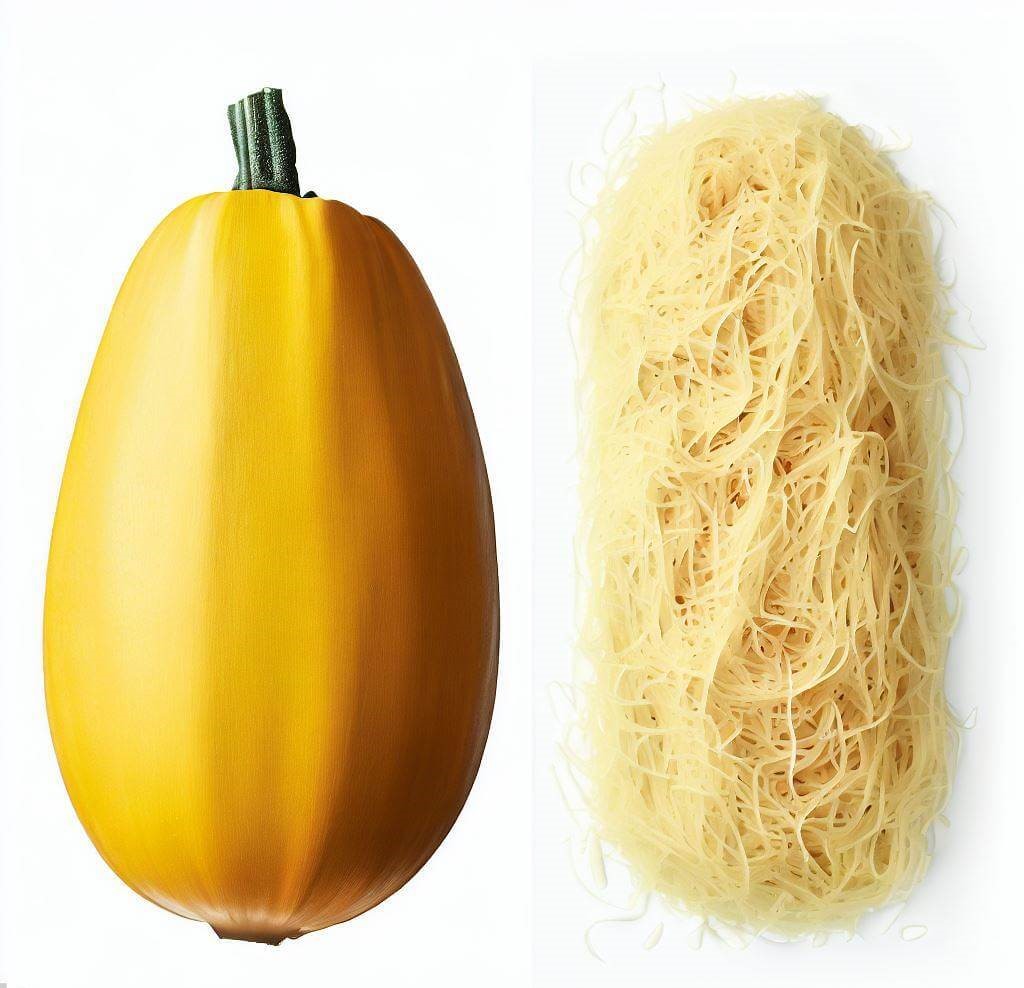
Nutritional Benefits of Spaghetti Squash
Spaghetti squash is a low-calorie and low-carb alternative to traditional rice, with a 1-cup serving containing just about 40 calories and 10 grams of carbohydrates. This is significantly less than the 200-plus calories and 45 grams of carbohydrates found in an equivalent serving of cooked white rice.
Beyond its low calorie and carbohydrate content, spaghetti squash also brings other nutritional benefits. It’s rich in fiber, providing about 2.2 grams in a 1-cup serving. Dietary fiber is known to slow the absorption of sugar into the bloodstream and reduce blood glucose levels, making it a crucial nutrient for blood sugar management.
Furthermore, spaghetti squash is rich in various vitamins and minerals, including vitamin C, vitamin B6, and manganese. These nutrients play a role in overall health and wellness and can contribute to a balanced diet.
4. Quinoa
Quinoa, though often treated as a grain, is actually a seed. This small but mighty superfood is an excellent addition to a diabetic-friendly diet, and it’s a fantastic alternative to rice. It boasts a rich nutrient profile and a unique flavor that can enhance a variety of dishes.
Why Quinoa is a Superfood
Quinoa is considered a superfood for several reasons. First and foremost, it’s one of the few plant foods that provides all nine essential amino acids, making it a complete protein source. A cup of cooked quinoa provides about 8 grams of protein.
Besides protein, quinoa is also high in fiber, with a 1-cup serving offering approximately 5 grams. This fiber content can help keep you satiated and your digestive system healthy.
Quinoa is also packed with a range of essential vitamins and minerals, such as magnesium, B-vitamins, iron, potassium, calcium, phosphorus, and vitamin E. Plus, it’s naturally gluten-free, making it a great choice for those with celiac disease or non-celiac gluten sensitivity.
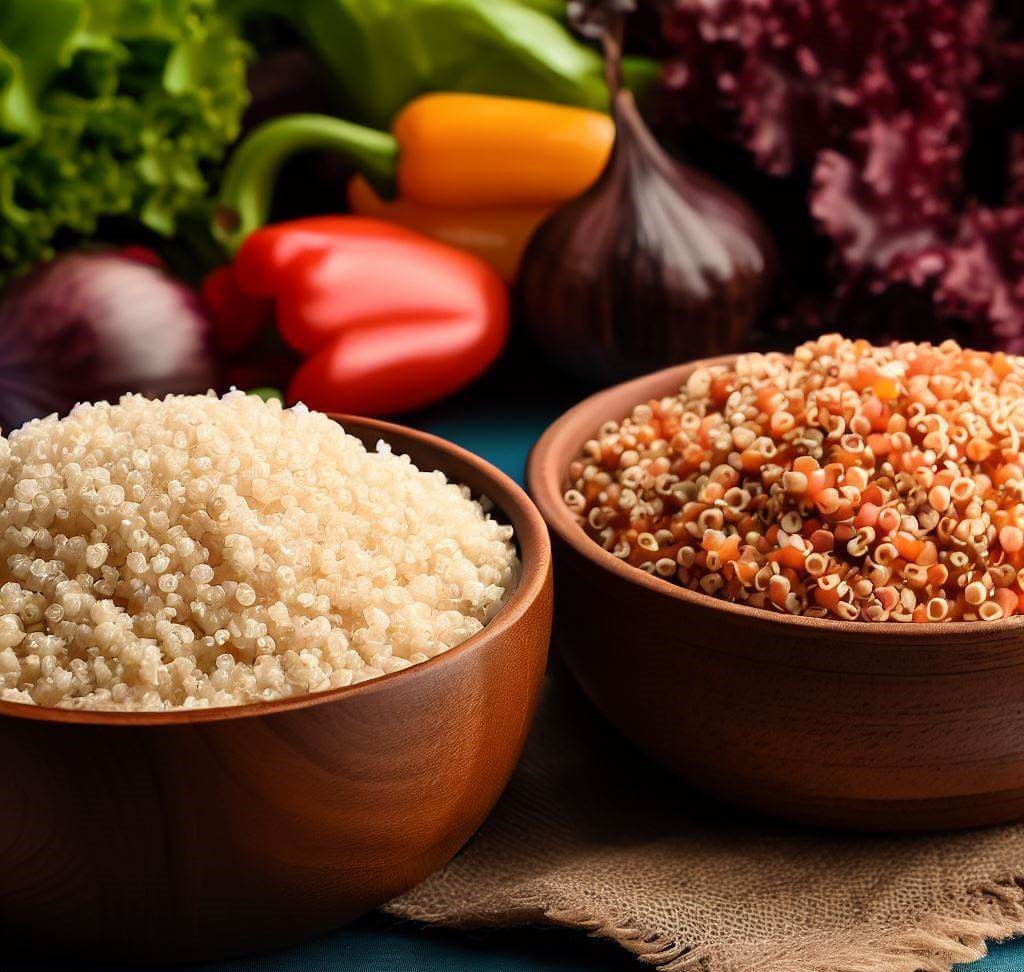
Quinoa’s Impact on Blood Sugar
When it comes to blood sugar management, quinoa shines. It has a glycemic index of 53, which is relatively low and means it has a less significant impact on blood sugar levels compared to high-glycemic foods like white rice.
The high protein and fiber content in quinoa can also help control blood sugar levels. Both protein and fiber slow digestion, preventing spikes in blood sugar levels after meals.
3. Chia Seeds
Chia seeds, native to Central America, have long been appreciated for their health benefits and nutritional richness. They may be tiny, but they pack a significant health punch, making them a beneficial addition to a diabetes-friendly diet.
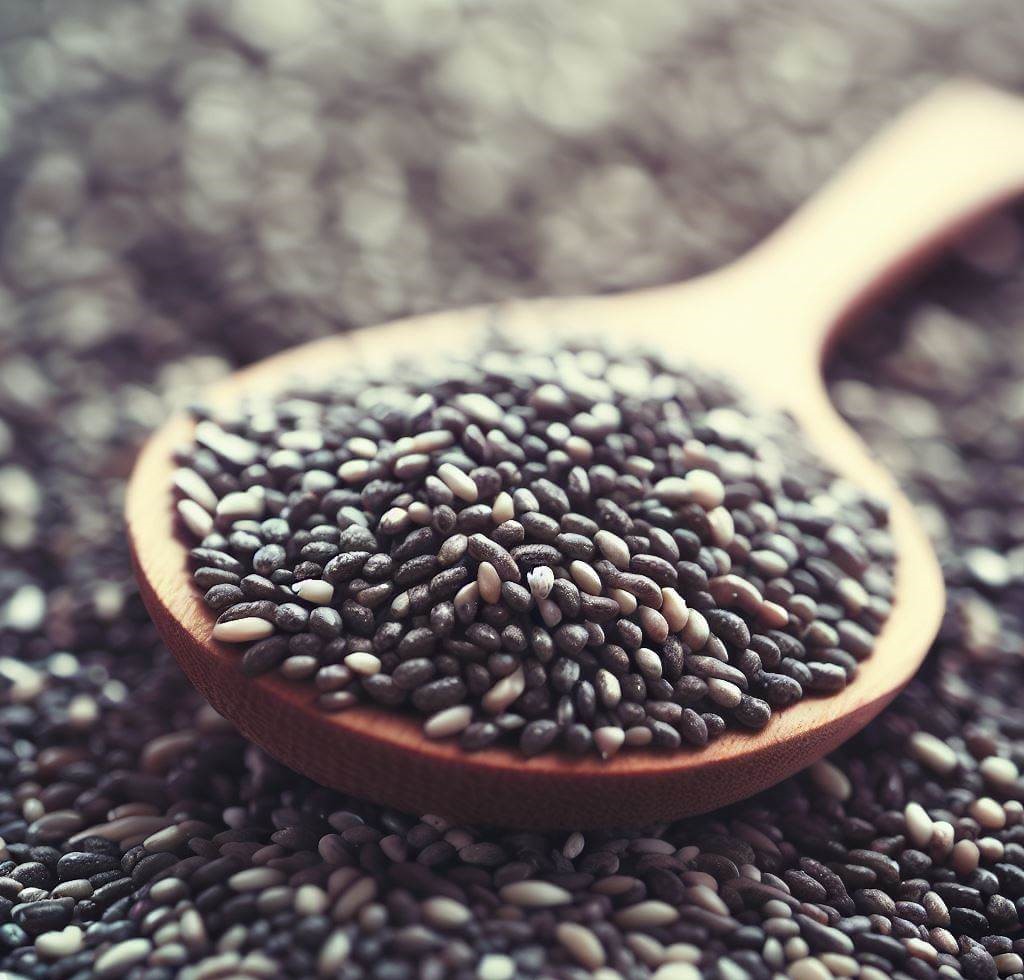
The Power of Chia Seeds
Chia seeds are rich in fiber, with a single ounce providing an impressive 10 grams. Consuming high-fiber foods can help maintain a steady blood sugar level as fiber slows the rate at which sugar is absorbed into the bloodstream.
Chia seeds are also a good source of healthy omega-3 fatty acids, which are known for their heart-health benefits. Omega-3s can reduce inflammation, lower cholesterol levels, and reduce the risk of heart disease, a common concern for people with diabetes.
In addition to fiber and omega-3s, chia seeds are also high in antioxidants, which can protect your cells from damaging free radicals, and they provide a decent amount of protein, calcium, magnesium, and phosphorus.
One remarkable property of chia seeds is their ability to absorb water, up to 12 times their weight. When they come into contact with liquids, they form a gel-like substance, which can contribute to a feeling of fullness and help curb overeating.
Using Chia Seeds in Your Diet
Incorporating chia seeds into your diet is simple due to their mild flavor, which can easily blend with many foods. Here are a few ways to use chia seeds:
- Chia Pudding: Soak chia seeds in milk (dairy or plant-based) to create a pudding-like consistency. You can flavor it with vanilla, cocoa, or fruit for a delicious and healthy dessert or breakfast.
- Smoothies: Add a spoonful of chia seeds to your smoothies for an extra dose of nutrients.
- Baking: You can use chia seeds in baking as a replacement for eggs in some recipes. Mix one tablespoon of chia seeds with three tablespoons of water, let it sit for about 15 minutes, and you’ll have a gel that can act as a binder in your baking.
- Toppings: Sprinkle chia seeds on yogurt, oatmeal, or salads for a crunch that comes with health benefits.
- Thickener: Use chia seeds to thicken soups, sauces, or gravies naturally.
Remember to drink plenty of water when consuming chia seeds, as they can absorb large amounts of water and could potentially cause digestive issues if not properly hydrated.
2. Cauliflower Rice
Cauliflower rice has gained popularity in recent years as a low-carb, grain-free alternative to traditional rice. It’s made by grating or pulsing cauliflower florets in a food processor until they reach a rice-like consistency. The result is a versatile, nutrient-dense side dish that’s suitable for a variety of dietary preferences, including those looking to manage their blood sugar levels.
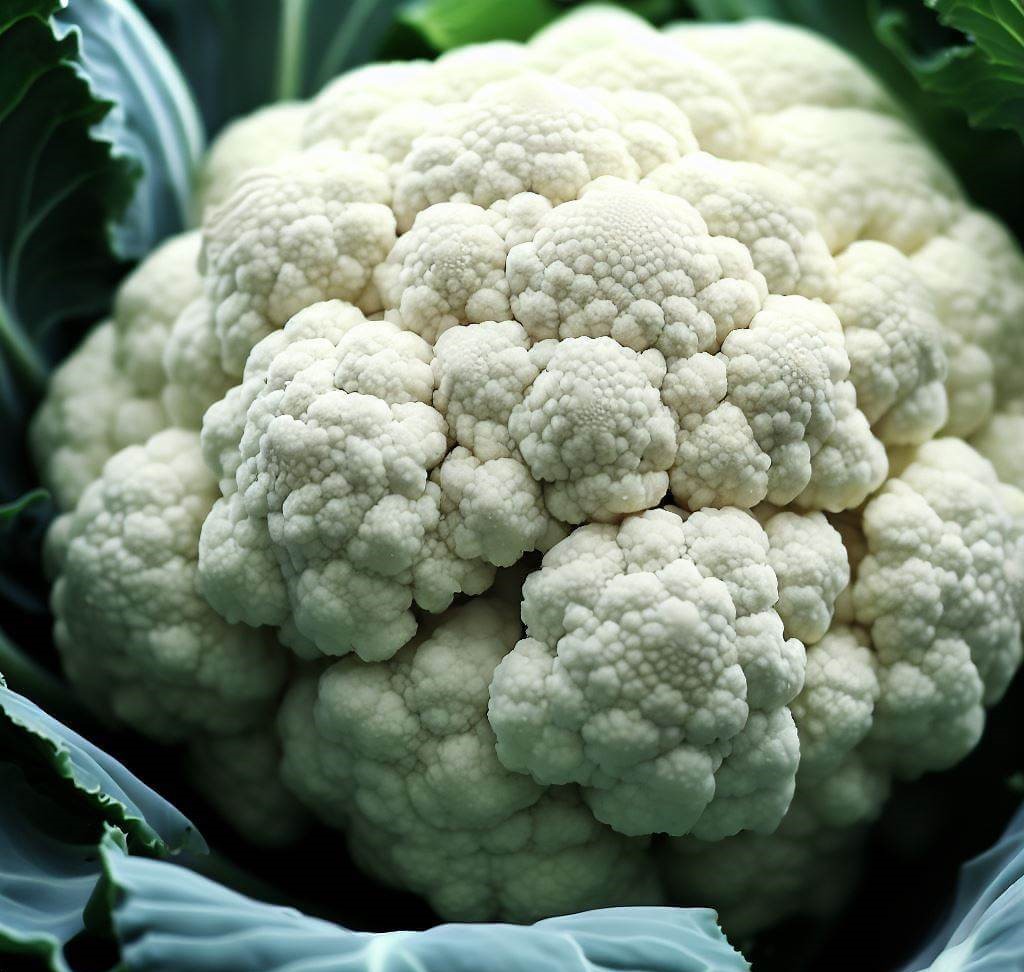
Nutritional Benefits of Cauliflower
Cauliflower is a member of the cruciferous vegetable family, known for its rich supply of nutrients and health-promoting properties. It’s high in fiber, which aids digestion and helps regulate blood sugar levels. A cup of cauliflower rice has about 2-3 grams of fiber, contributing to a steady blood sugar response when consumed.
Cauliflower is also packed with antioxidants, including vitamin C, beta-carotene, kaempferol, quercetin, and others, which can reduce inflammation and protect your cells from harmful free radicals.
What makes cauliflower a great alternative to rice for diabetics is its low carbohydrate content. A cup of cauliflower rice contains approximately 5 grams of carbs, compared to around 45 grams in a cup of cooked white rice. This significant difference makes cauliflower rice an excellent choice for those watching their carb intake.
Moreover, cauliflower is rich in various B-vitamins, potassium, and vitamin K. It also contains a compound called sulforaphane, which has been linked to several health benefits, including cancer prevention and heart health improvement.
1. Zucchini Noodles (Zoodles)
Zucchini noodles, often referred to as “zoodles,” are a versatile, low-carb alternative to traditional pasta and rice. They’re created by spiralizing zucchini into long, thin strands, which can then be used in a variety of dishes. From Italian-style pasta dishes to Asian-inspired stir-fries, zoodles are a fantastic way to incorporate more vegetables into your diet while keeping your blood sugar levels in check.
What are Zoodles?
Zoodles are simply zucchini that’s been cut into noodle-like strands. They got their playful name from the combination of “zucchini” and “noodles.” To create zoodles, all you need is a kitchen tool called a spiralizer. But, if you don’t own one, you can also use a vegetable peeler or a knife to cut thin, noodle-like strips from the zucchini.
Zoodles are a great way to enjoy the texture of noodles without the high carbohydrate content, which makes them a popular choice among people following low-carb, ketogenic, paleo, and gluten-free diets.
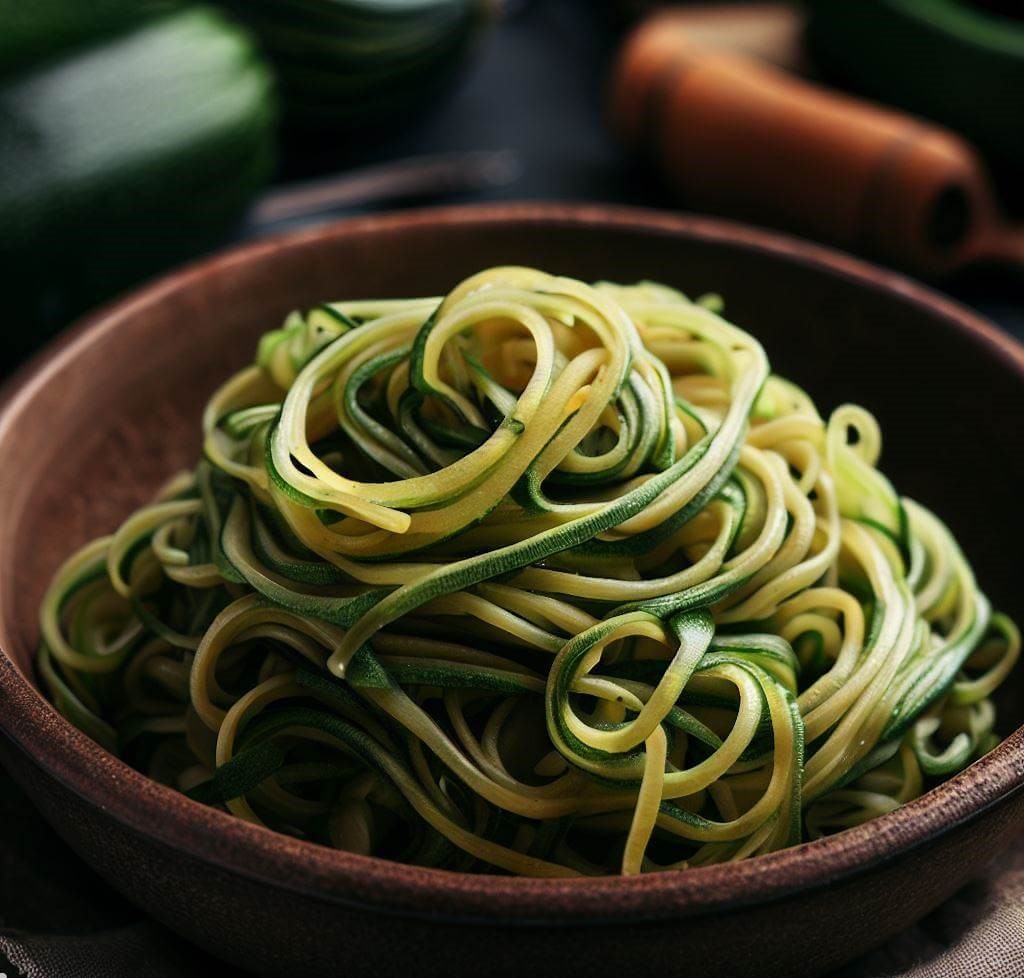
Health Benefits of Zoodles
Zucchini is a nutrient-rich vegetable, and turning it into noodles doesn’t diminish its health benefits. Zoodles are an excellent source of vitamin C, a powerful antioxidant that aids in wound healing, immune function, and collagen synthesis. They also provide a good amount of vitamin B6, folate, and potassium.
Moreover, zucchini is low in calories and carbohydrates, making it an excellent option for those managing their blood sugar levels. It’s also high in fiber, which can slow down digestion and provide a steady release of glucose into the bloodstream, preventing blood sugar spikes.
Conclusion
Managing blood sugar levels is critical for those with diabetes or anyone looking to maintain overall health. Diet plays a pivotal role in this, and finding nutritious, low-glycemic alternatives to foods like rice can make a significant difference. Replacing rice with healthier options like broccoli rice, shirataki rice, spaghetti squash, quinoa, chia seeds, cauliflower rice, and zoodles not only aids blood sugar control but also enhances your diet with additional vitamins, minerals, fiber, and antioxidants.
From the nutritional profile to the versatility in preparation, these alternatives are worth incorporating into your meal plans. Not only will they bring diversity to your plate, but they also provide potential health benefits such as improved digestion, better heart health, and enhanced weight management. Remember, everyone’s body reacts differently to different foods, so it’s essential to monitor your blood sugar levels when trying new foods.
FAQs
1. Can I completely replace rice with these alternatives in my diet?
While these alternatives are healthier, it’s not necessary to completely eliminate rice from your diet, especially if you enjoy it. The key is portion control. Try to limit your rice intake and mix in these alternatives for diversity and additional nutrients.
2. Are these alternatives suitable for people without diabetes?
Absolutely. These alternatives are not just for people managing their blood sugar levels. They are nutrient-dense foods that can contribute to overall health and are a great way to incorporate more vegetables and fiber into your diet.
3. Where can I buy shirataki rice?
Shirataki rice is usually available in the health food or international aisle of most supermarkets. You can also find it online or at Asian grocery stores.
4. Can I eat zoodles raw?
Yes, zoodles can be eaten raw or cooked. Raw zoodles have a bit more of a crunch, making them a great addition to salads.
5. Is quinoa better than rice for weight loss?
While both quinoa and rice can be part of a healthy diet, quinoa has a higher protein and fiber content than rice, which can help keep you feeling full longer. This makes quinoa a good choice for those trying to lose weight.





